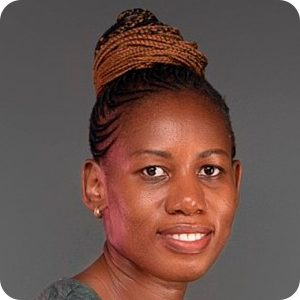With the rise of artificial intelligence, the world around us is changing almost every day. As it becomes ever more present in all aspects of people’s lives, AI could have the potential to achieve more inclusion in society by bridging inequality gaps and empowering marginalized communities. From ensuring easier access to education and healthcare to financial inclusion and contact with social services, AI-driven innovations play a crucial role in making the lives of people and communities that belong to vulnerable categories better. Check out more about the role of AI in improving access to essential services for marginalized communities in this article.
Key Takeaways:
- In 2023, the number of people using AI tools worldwide exceeded 250 million, more than double the number in 2020.
- According to experts, AI improves access to essential services by offering personalized solutions such as gender-sensitive chatbots and assistive technologies that are tailored to the needs of marginalized groups.
- AI is also revolutionizing eye health which is not prioritized in most developing countries.
- To ensure AI is developed and deployed fairly and inclusively, measures such as inclusive design processes and transparency are essential to avoid bias and discrimination.
DevelopmentAid: How can AI be leveraged to improve access to essential services for vulnerable categories and marginalized communities?

“AI is the term used to describe the imitation of human intelligence by machines that have been designed to carry out functions such as learning, reasoning, problem-solving, and decision-making. More specifically, in terms of gender and disability, by taking an ‘intersectional feminist approach’, AI focuses on creating equitable, ethical, and inclusive systems by addressing power dynamics, embracing diversity, and involving marginalized communities in the design process. AI can significantly improve access to essential services for marginalized communities, particularly women and people with disabilities, by offering personalized and accessible solutions. AI-powered tools such as chatbots can provide gender-sensitive and disability-inclusive information in real time to address specific health, education, and legal needs. Voice recognition and AI-driven assistive technologies cater to individuals with certain impairments, ensuring they can access services without barriers. For those with a low literacy level, complex material can be condensed into brief summaries with the addition of images. AI can also analyze data to identify gaps in services for women and people with disabilities, enabling targeted interventions in areas like maternal health or inclusive education. Chatbots can support people to feel less alone and can answer questions they feel uncomfortable asking a human on topics such as sexual and reproductive health and respectful relationships. AI can also facilitate access to financial services by providing tailored financial advice and management for women. By utilising intersectional feminist design principles, AI can empower these communities, ensuring that services are not only accessible but also tailored to their unique challenges.”

“AI is transforming the world in all spheres with, for example, a focus on eye care and health which is not prioritized in most developing countries. AI offers a new opportunity to revolutionize this sector. Globally, at least 2.2 billion people have a vision impairment, of which at least 1 billion have an eye condition that could have been prevented or is yet to be addressed, according to the World Health Organization. AI can help diagnose eye problems by analyzing vast amounts of data. Healthcare workers can benefit from training through simulations and innovative learning forums to reach a wider audience in the eye health sector. This would further enhance the quality of the services offered. The ability of AI to analyse large volumes of data could lead to the easy identification of patterns and insights and to predict future trends. These predictions would enable communities to allocate resources appropriately. Accessibility to eye health services in marginalized communities can be overcome by AI offering eye health consultations remotely, and therefore individuals would not have to travel. Further reviews can be automatically booked and reminders sent for effective treatment.”
DevelopmentAid: What measures are necessary to ensure that AI is developed and deployed in a fair and inclusive manner?

“Risk. Bias. Discrimination. Harm. All these words are linked to the use of AI. AI is built from data created by humans and a society that has existing bias and discriminatory attitudes, particularly around race, gender, disability, and diverse sexual orientation, gender identity, expression, and sex characteristics (SOGIESC). There have been many examples of how AI has excluded, negatively impacted and caused harm to members of marginalized groups. This is why the utilization of strong intersectional feminist principles in AI governance, development and deployment is vital. Inclusive AI development must prioritize gender and disability considerations by using diverse datasets that reflect the experiences of different groups, including women, people of diverse SOGIESC, and people with diverse disabilities. Ethical design processes should involve these groups directly, ensuring the design team is diverse and that the AI systems address and include their needs and avoid perpetuating biases. Transparent, explainable AI is crucial for building trust, particularly among those who have historically been exploited and excluded. Policies should mandate that AI systems are developed with a strong gender and disability focus and that they are accessible to all. Ongoing and close monitoring should assess the impact on women, people of diverse SOGIESC and people with disabilities, ensuring AI technologies are avoiding increased risks and discrimination for them, and instead advancing their rights and providing equitable opportunities.”
See also: Challenges and opportunities for education in the era of AI | Experts’ Opinions
The rise of artificial intelligence is reshaping the job market in different ways, and the international development sector is no exception. When looking for openings in the era of AI, candidates should use effective techniques to improve their search. One efficient and time-saving method is to use specialized job boards for international development, such as DevelopmentAid. With an Individual Professional Membership, members can access thousands of jobs, check for shortlisted or awarded organizations and send their CV directly to them, access grants and tenders for individuals, and much more.

